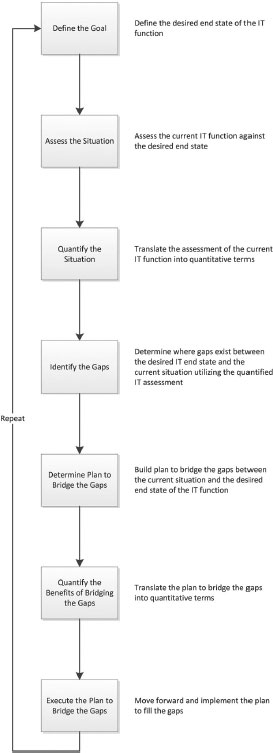Chapter 19
Conclusion
As noted in the Preface, this book is a guide to aid you in optimizing and assessing information technology (IT). With global IT spending reaching U.S. $3.9 trillion in 2009, the IT market is large and global in nature.1 Despite its size, however, few IT projects succeed or turn out well.2
After working through Chapters 1 to 18, you should be able to (1) generate an accurate and reliable assessment of a company's IT operations and (2) identify areas on which to focus to optimize IT. The overview of the IT Pillars Model (IPM), the IPM Scorecard, and the two case studies provided a solid foundation and good practical examples focused on improving business project execution through effective IT optimization and assessment.
Part One of the book introduced the concept of the IPM for optimizing and assessing IT. In addition to the IPM, Part One provided background material in terms of where and how the IPM fits into the overall operations of a business. Topics such as strategic direction and enterprise architecture were discussed and covered.
An overview of the steps involved in the process of optimizing and assessing IT is shown in Figure 19.1.
Figure 19.1 Steps for Optimizing and Assessing IT

The IPM consists of three pillars—Strategy, Project Management, and Operational Excellence—as well as three components—People, Process, and Technology.
A summary view of ...

